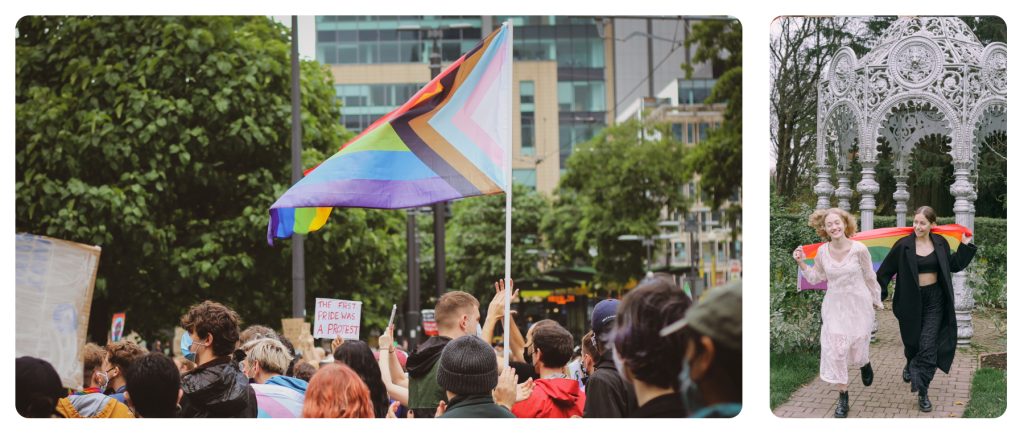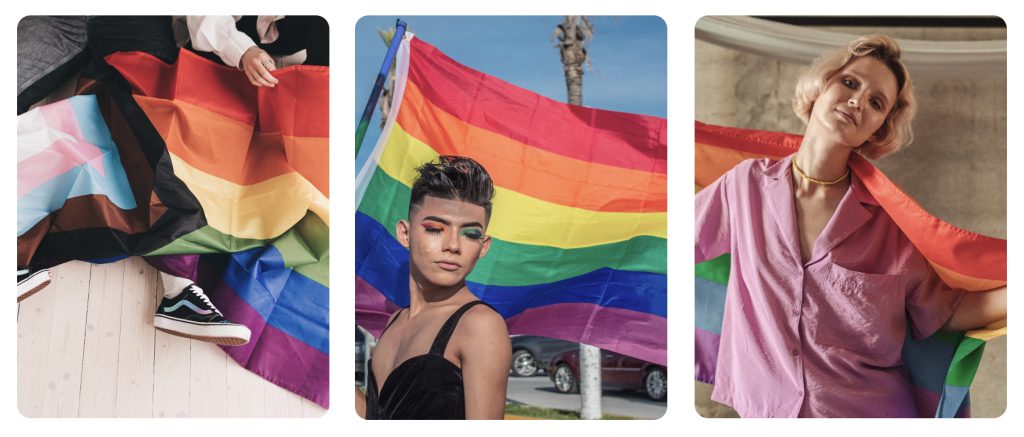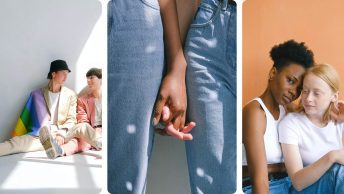We’re wrapping up pride month with one final article on the history of Pride in Germany. As you probably already know, pride originally came from the Stonewall Riots in the United States and inspired similar protests in Germany. In this article, we’ll talk about how it happened and how it’s commemorated today.
The history of pride month
Pride started with the Stonewall Riots on Christopher Street in New York on the 28th of June 1969. A year later in commemoration of the riots that took place, the first pride parade was held in June.
Christopher Street has its own rich history that illustrates its origin from the 1700s all the way to the people who pushed back against prohibition, which helped establish the speakeasy culture that eventually morphed into a queer scene. It wasn’t until 1934 that there were documented gay bars that had frequent visits from the police (because serving a gay person in any bar was illegal during that time). People were unable to live openly without establishing their own bars and locations where they wouldn’t face discrimination.
The mafia begins to see their opportunity in Greenwich Village (the district where Christopher Street is located), and they began buying the bars in the neighborhood and paying off police to make money on the growing queer community.
Queer life in the United States
There is a pretty significant difference between the queer history of Germany and the queer history of the United States. Before the Second World War in the United States, queer people were only discriminated against in certain more conservative communities and unable to live openly. For African American communities, there were people who were able to live openly as gay without much communal backlash (see the backlink for the United States above).
Due to segregation, the difference between BPOC and white queer communities was relatively extreme, but oftentimes queer white people would sneak into jazz bars in Black neighborhoods to hang out with others like the trumpet player Billy Tipton. His life made headlines after it was discovered that he was a transman, and his story inspired Jackie Kay to write Trumpet after reading how poorly his biography had been written by Middlebrook. The biography from Middlebrook does, however, give a small glimpse into the queer culture during segregation in the United States.
Because of the protection, the mafia offered through their police bribes, queer people from around the United States began going to Greenwich Village to avoid persecution.
The over-policing of Greenwich Village
There are mixed reports of why police started spending more time in the queer community of Greenwich Village, but it was evident that the control the mafia had over the community was no longer being respected, which meant that during the second half of the 1960s, police were raiding the bars and harassing people on the streets.
One night, the people in a predominantly Black and Latinx part of the Village were being harassed by police. The people began to fight back against the police to protect themselves and their community. This was the beginning of the Stonewall Riots. In recent years, it has also come out that these were also mostly transwomen who began the riots which would eventually become pride month (Christopher Street Day in Germany).
Two of the key figures of Stonewall were Marsha P. Johnson and Sylvia Rivera who were at the Stonewall Inn the night the police came. Being forced to leave home at a young age to live as sex workers in Greenwich Village (one of the few opportunities available to young trans women at the time), they had finally had enough of the system that had been oppressing them for so long. They took to the streets in protest and played key roles as activists in the years to come. Unfortunately, Marsha was found dead and Sylvia died of liver cancer in 2002, but both women are seen today as playing an important role in queer liberation.

The Gay Liberation Front: the uprising of activist groups
The Stonewall Riots triggered something even greater: gay liberation. People began protesting in June each year in remembrance of the Stonewall Riots with parades popping up throughout Europe as well as queer communities found inspiration from what the Americans had achieved. Many of these groups had existed before Stonewall, but the push for queer liberation was starting to take on a global scale with media reports becoming more accessible on TV and radio.
Many sub-groups broke off from the Gay Liberation Front including the Gay Activists Alliance, Street Transvestite Action Revolutionaries, and Lavender Menace. This was also at the same time as the growing feminist movement with groups like the National Organization of Women (NOW) purposefully disavowing lesbian women because they thought it would mean fewer rights for women in general.
Another group formed at the same time was W.I.T.C.H or the Women’s International Terrorist Conspiracy from Hell, which was an offshoot of the New York Radical Women (not to be confused with NOW). They focused primarily on wealth inequality which was also a prominent topic in most of the feminist and queer activist groups.
The ACT UP Movement or The AIDS Coalition to Unleash Power
Just as the gay and trans* liberation movements were getting started, AIDS hit the gay community. On the 5th of June 1981, doctors officially found the first cases of AIDS in gay men. The disease wasn’t like anything they had seen before with the immune systems of healthy young men seemingly stopping to function.
The media immediately latched on to the idea of this being a sort of gay cancer that had many people against the gay liberation movement horrifically excited and some evangelicals attributed it to a sort of judgment of homosexuality as a sin. Because many homophobic politicians and researchers slowed the pace of drug research.
ACT UP not only helped to get treatment for HIV expedited, but it also changed the way drugs and medical treatments are approved by the FDA. We can still see remnants of its legacy throughout the world with free and anonymous HIV tests, HIV/AIDS medication like PrEP.

Pride is more than just a party
While many pride parades have turned into companies buying floats to escort their upper-level management down a street with dancers below them listening to the playlist “pride party 2022” on Spotify (yes, it’s real), pride still symbolizes the struggles people had to go through to come out and still go through today.
Suicide rates in LGBTQ+ teens are still high with many not feeling like they’ll be accepted, and there are hundreds of articles speaking about how LGBTQ+ people are overrepresented when it comes to homelessness. It’s also still illegal to be gay or trans in many countries with people facing death by law or a social death through the community. We hope that we were able to represent pride this month by providing the community with access to information both in terms of the history of the LGBTQ+ community as well as access to healthcare information.
We look forward to seeing you all for Pride 2023!







